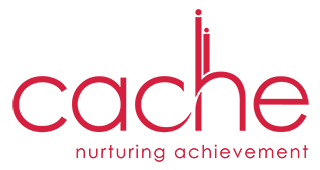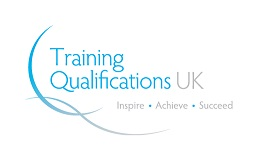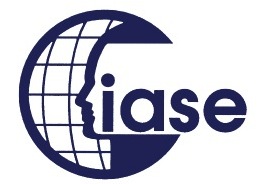Unlock Your Child's Potential: Comprehensive Dyslexia Assessment And Intervention Strategies
15th March 2023

Dyslexia is a neurological disorder that affects reading skills. It is characterized by difficulty in accurately and fluently decoding words. This difficulty can manifest itself in a number of ways, including problems with phonemic awareness, phonology, and word decoding.
Individuals with dyslexia often have difficulty with some of the following: knowing the alphabet, being able to read quickly, reading aloud, and being able to spell words correctly. Although there is no single cause of dyslexia, it is believed to be caused by a combination of genetic and environmental factors. It is believed to be more common in individuals with a family history of the disorder.
It is estimated that 1 out of 10 people have dyslexia. The world has roughly 7.8 billion people living it in, where 780 million of them are dyslexic and 70-80% of people with poor reading skills, are likely dyslexic all over the world, according to the Centre of Utah.
The best way to identify students with dyslexia is through a comprehensive assessment that includes a review of family history, a cognitive assessment, and an academic achievement assessment. Early identification and intervention are critical for students with dyslexia. If you think your child may have dyslexia, please reach out to your child’s school or a qualified health professional for an assessment.
In addition, you can become a more effective special educator by going through our recommended Online Master of Arts in Education with Special Education course, which will teach you the relevant and effective teaching techniques to deal with specially-abled students.
What is dyslexia?
Dyslexia is a learning disorder that affects learning ability, specifically in reading, writing, and spelling. Dyslexia is often attributed to hereditary factors and is considered to be one of the most common forms of learning disability. Individuals who suffer from dyslexia usually have difficulty understanding and processing written language and tend to reverse spelling words or struggle to pronounce them.
According to the National Center for Learning Disabilities, approximately 20% of the population demonstrates evidence of dyslexia. The exact cause of dyslexia is unknown; however, research has found that dyslexia is associated with neurological and cognitive differences.
These brain differences affect the way that individuals process and interpret written language. Difficulty with language can manifest itself in a variety of ways, including difficulties with phonemic awareness, decoding, and processing speed. Additionally, dyslexia can interfere with the individual’s ability to accurately and quickly decode words and spell correctly.
Signs and Symptoms of Dyslexia:
There is no single symptom that is indicative of dyslexia, but many signs and symptoms can be present when an individual is dyslexic. Below are some of the most common signs and symptoms of dyslexia, according to the National Centre for Learning Disabilities:
- Difficulty with reading comprehension
- Trouble sounding out words
- Difficulty with spelling
- Slow reading rate
- Struggling to read aloud
- Reversal of letters, words, and/or numbers
- Difficulty with math calculations
- Trouble with grammar
- Poor organizational skills
It is important to note that not all individuals who are dyslexic will have all of these symptoms. It is also important to note that dyslexia can vary in severity.
The Impact of Dyslexia on Learning
Dyslexia can significantly impact an individual’s ability to acquire and use academic skills. Individuals with dyslexia often have difficulty understanding the basics of reading, writing, and spelling.
Dyslexia can also make it difficult for individuals to comprehend complex information in the text. Additionally, individuals with dyslexia may have difficulty with time management, organization, and memory.
The impact of dyslexia is far-reaching and can interfere with an individual’s day-to-day functioning. Individuals with dyslexia can also experience emotional and social difficulties, including low self-esteem and negative feelings of isolation, frustration, and sadness.
It is important to recognize that dyslexia is not a sign of low intelligence. Individuals with dyslexia can excel academically and achieve success in a variety of fields. With the right strategies and support in place, individuals with dyslexia can reach their full potential.
How to Assess and Identify Students with Dyslexia in Schools
In order to assess and identify students with dyslexia in schools, it is important for teachers and other school personnel to recognize the various signs and symptoms associated with dyslexia. If a teacher or other staff member suspects that a student may be dyslexic, the first step is to refer the student to a qualified professional for evaluation.
A comprehensive assessment is the best way to determine whether a student is dyslexic. Typically, a comprehensive assessment will include a review of the student’s family history, a cognitive assessment, and an assessment of the student’s academic achievement.
This assessment is usually conducted by a qualified professional, such as a psychologist or speech-language pathologist, and will involve several tests and evaluations. Once the assessment is completed, the professional performing the assessment will be able to diagnose the student with or without dyslexia.
If the student is found to have dyslexia, the professional can provide recommendations for appropriate interventions and accommodations that can help the student succeed in school.
Wrapping Up
Dyslexia is a common neurological disorder that can have a major impact on an individual’s learning and academic success. However, with the right identification and intervention strategies in place, individuals with dyslexia can reach their full potential.
Assessing and identifying students with dyslexia can be a complex process, but a comprehensive assessment is the best way to detect signs of dyslexia. Once a student is identified with dyslexia, it is important to provide the necessary accommodations and support to ensure the student’s success in school.
As a teacher or school staff member, it is important to recognize the signs and symptoms of dyslexia and refer any students who may be exhibiting them to a qualified professional for assessment. With the right identification and intervention strategies in place, students with dyslexia can succeed and reach their goals.
In case, if you want to enhance your teaching skills as a special educator then we do recommend our Online Master of Arts in Education with Special Education course, which will definitely help you in your teaching career to grow.








